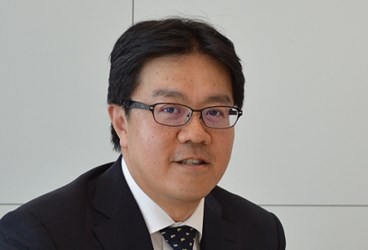Can Bayer Innovate the Incubator For Japan?

By Louis Garguilo, Chief Editor, Outsourced Pharma

After a short walk southeast from bustling Osaka Station, just past the Herbis Plaza shopping and restaurant complex, Dr. Shunichi Takahashi arrives at the 33-story Breeze Tower that houses Bayer Yakuhin headquarters. He’s head of Bayer’s Open Innovation Center Japan (ICJ), and on this early June morning, on the cusp of the rainy season, he’ll take my call from New York to talk about the center, and the state of drug research and development in Japan.
Bayer has operated in Japan for over 100 years, establishing Bayer Yakuhin (Japanese for ‘medicine’) in 1973, and the ICJ exactly one year ago. The first mission of the ICJ is to nurture and draw out some of the vast and cutting-edge drug research done at Japanese universities. Takahashi, though, won’t be emulating Bayer’s established incubators, the CoLaborators in San Francisco and Berlin. Unlike those areas, there just aren’t many bio-related start-ups in Japan.
“ICJ is not the same concept as our incubators,” says Takahashi. “While we are aligned with our Global External Innovation & Alliances Group, which steers science and innovation hubs in places like Beijing and Singapore, the activity itself should be fit to each region, its requirements, and the researchers there. It’s not necessary to follow similar approaches.”
First: Why Few Biotechs In Japan?
Why isn’t there a biotech industry in Japan for the ICJ to work with?
As someone with experience in the country, I know that “Japanese culture” does not somehow inhibit the industry: Japanese start-ups and entrepreneurs in various industries – including Osaka’s own Konosuke Matsushita, who became Japan’s “god of management” – are legendary. Is it a lack of government funding? Funding has indeed come in fits-and-starts as Japan’s governments have come and gone. Or maybe it is that university researchers prefer to stay put; this may be the cultural trait at which we can point a finger. For whatever reason, the entrepreneur bug hasn’t hit Japanese academia, despite impressive research conducted at universities throughout the country.
Because of this, Japan Pharma has tried to reach directly into the academic institutions for collaborations. At times it has worked. A recent example is Ono Pharmaceuticals’ OPDIVO (Nivolumab), the world’s first immune-therapy drug targeting the PD-1 [programmed death-1] pathway. As described in this article, the antibody for that drug originated in the labs at Kyoto University.
And Kyoto University leads us back to Bayer, and my interview from Osaka with Mr. Takahashi.
Bayer’s University Model For Japan
Of course it’s not unusual for pharma to collaborate with academic researchers, but Bayer’s ICJ has its own approach. Including Takahashi, the ICJ has six employees, all with strong scientific research backgrounds. All are also without a lab. “We don’t have any research facilities,” says Takahashi. “The model is to frequently visit the professors at their university labs. We don’t want to just introduce the opportunities to our research colleagues at Bayer, we want to behave as scientists by working directly with Japan researchers. This is our direct approach.”
The center got a kick-start in September of last year when Bayer HealthCare announced its own, two-year collaboration agreement with Kyoto University’s Office of Society-Academia Collaboration for Innovation (KU-SACI). The partners will jointly identify candidates for possible collaborative research projects.
“We’ve just opened a satellite office right on the Kyoto University campus,” says Takahashi. “It’s quite a new concept for us…and maybe in Japan. It will continue to strengthen our network with researchers at KU.”
And gaining that foothold might be a good idea for Bayer. With nearly all of domestic Japan pharma companies’ employees hailing from Japanese universities, there is certainly a web of connections and competition for the research there.
“I believe to some degree all Japanese pharma are looking for something within the universities. From this viewpoint, it is competitive,” explains Takahashi. “However, if you look at Kyoto University as an example, there are approximately 2,800 professors, and they have various branches and technologies. We can all find synergistic areas for productive collaborations.”
Casting A Wider Net
The ICJ has also tapped into Bayer’s global “open innovation approach” to cast a wider net for collaborations with Japanese researchers. A key component is its web-based crowdsourcing initiative – “Grants4Targets” – that provides grants for certain research targets.
The crowdsourcing program was introduced globally in 2009, but had remained relatively unknown and under-utilized in Japan. “Another mission for the ICJ,” says Takahashi, “is to get the word out and strongly promote this program in Japan. We actively promoted the first due date for applications on March 31. As a consequence, more than 10 percent of the submissions came from Japan, including many universities.”
And Takahashi doesn’t feel left on an island in the fulfillment of his other roles at Bayer. With the ICJ offices located at Bayer Yakuhin’s headquarters, he gets support from the wider Bayer organization. For example, recently about a dozen Bayer scientists from Germany joined an “AGORA Bayer Meeting” with 12 Kyoto University researchers. “Agora, as in ‘symposium’ in Greek,” Takahashi explains. “We have three or four of these meetings a year to discuss the direction of our collaborations. The specific topic of this recent meeting was stem cell research, and the discussion was very productive.”
Measuring Innovation
I ask Takahashi by what standard will the ICJ be measured these first years.
“Early collaborations, and even the preparation for collaborations, can take some time,” he replies. “We’ve begun to establish relationships. Hopefully, we can introduce a new concept for a research collaboration that impacts Bayer’s pipeline. I’m not sure about being able to accomplish that in one year, but we will do our best moving forward.”
Takahashi believes he’s satisfactorily staffed for the near term, but that could change depending on future activities. And while he hints those activities will increase, for now he says, “I can’t speculate, but I would certainly like to increase our role in Japan. It’s not hard to imagine we’ll have more innovation in collaboration models, as well as in research labs.”
Before I end our call and let him go back to the busy life that Osaka is known to provide its denizens, I ask him why he thinks he was selected to run the ICJ. “I think you’ll have to ask my management,” he laughs. “But my broad career might be one reason. I’ve had the opportunity to experience both research and product development, so I think this is helpful to establish our center and communicate effectively with academic researchers in Japan.”
In summation, Japan undoubtedly has the supporting infrastructure and technology, the established pharma companies, and the first-class university researchers. Although somewhat dated, Takahashi tells me in 2008, ten of the world’s top 50 pharmaceutical products originated from Japan. He adds, though, he’s seen data that says only 19 percent of the drugs approved in Japan from 1998 to 2007 derived from academic research; the corresponding number in the U.S. is 62 percent.
So the real task for Bayer’s ICJ – and all those involved in the pharma ecosystem in Japan – is the innovating it will take to get the innovations in the lab into pharmaceutical companies and subsequently out to patients.
